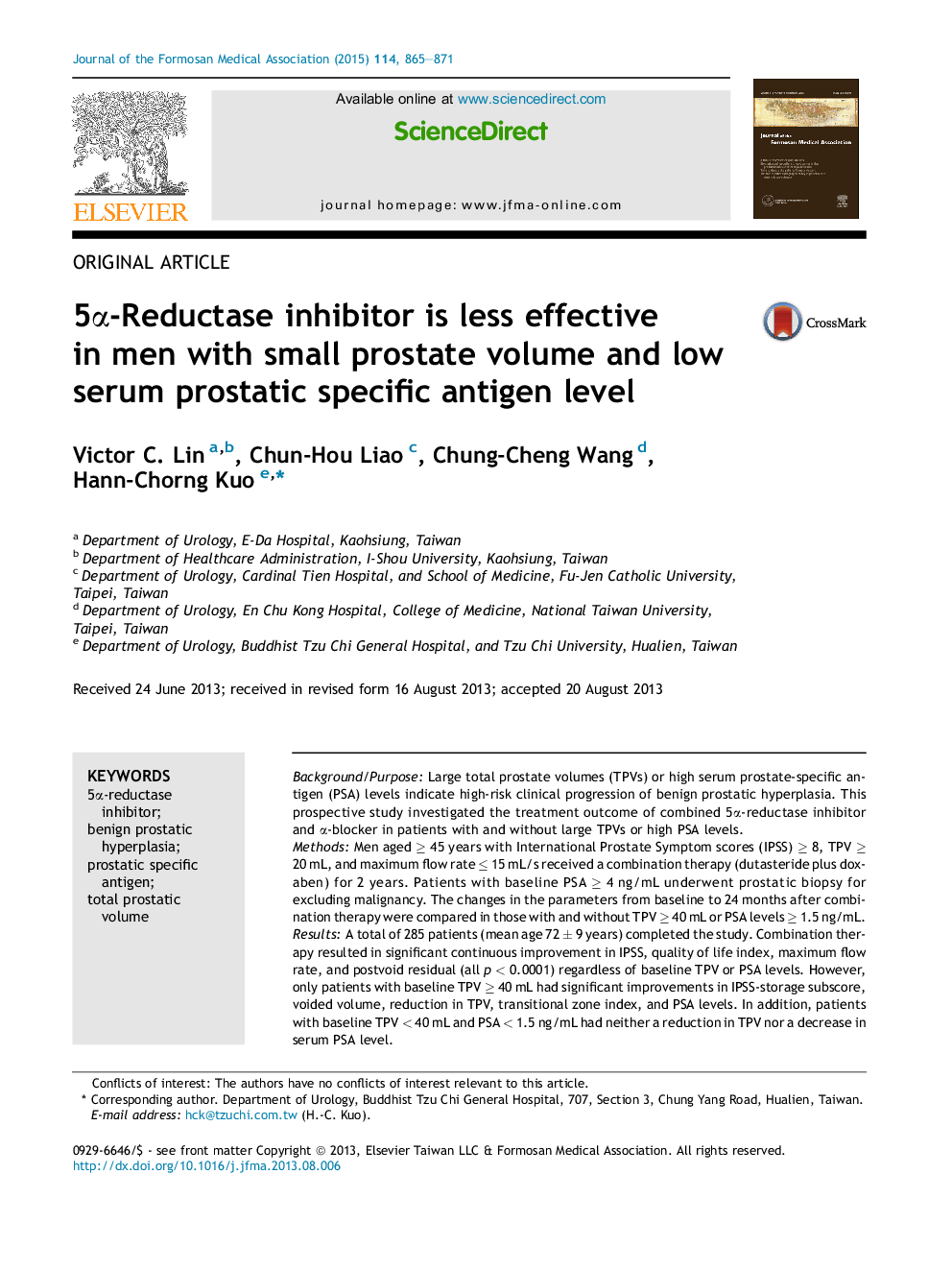| Article ID | Journal | Published Year | Pages | File Type |
|---|---|---|---|---|
| 3478452 | Journal of the Formosan Medical Association | 2015 | 7 Pages |
Background/PurposeLarge total prostate volumes (TPVs) or high serum prostate-specific antigen (PSA) levels indicate high-risk clinical progression of benign prostatic hyperplasia. This prospective study investigated the treatment outcome of combined 5α-reductase inhibitor and α-blocker in patients with and without large TPVs or high PSA levels.MethodsMen aged ≥ 45 years with International Prostate Symptom scores (IPSS) ≥ 8, TPV ≥ 20 mL, and maximum flow rate ≤ 15 mL/s received a combination therapy (dutasteride plus doxaben) for 2 years. Patients with baseline PSA ≥ 4 ng/mL underwent prostatic biopsy for excluding malignancy. The changes in the parameters from baseline to 24 months after combination therapy were compared in those with and without TPV ≥ 40 mL or PSA levels ≥ 1.5 ng/mL.ResultsA total of 285 patients (mean age 72 ± 9 years) completed the study. Combination therapy resulted in significant continuous improvement in IPSS, quality of life index, maximum flow rate, and postvoid residual (all p < 0.0001) regardless of baseline TPV or PSA levels. However, only patients with baseline TPV ≥ 40 mL had significant improvements in IPSS-storage subscore, voided volume, reduction in TPV, transitional zone index, and PSA levels. In addition, patients with baseline TPV < 40 mL and PSA < 1.5 ng/mL had neither a reduction in TPV nor a decrease in serum PSA level.ConclusionA high TPV indicates more outlet resistance, whereas elevated serum PSA level reflects glandular proliferation. Thus, patients with TPV<40 mL and low PSA levels has less benefit from 5α-reductase inhibitor therapy. The therapeutic effect of combined treatment may arise mainly from the α-blocker in these patients.
